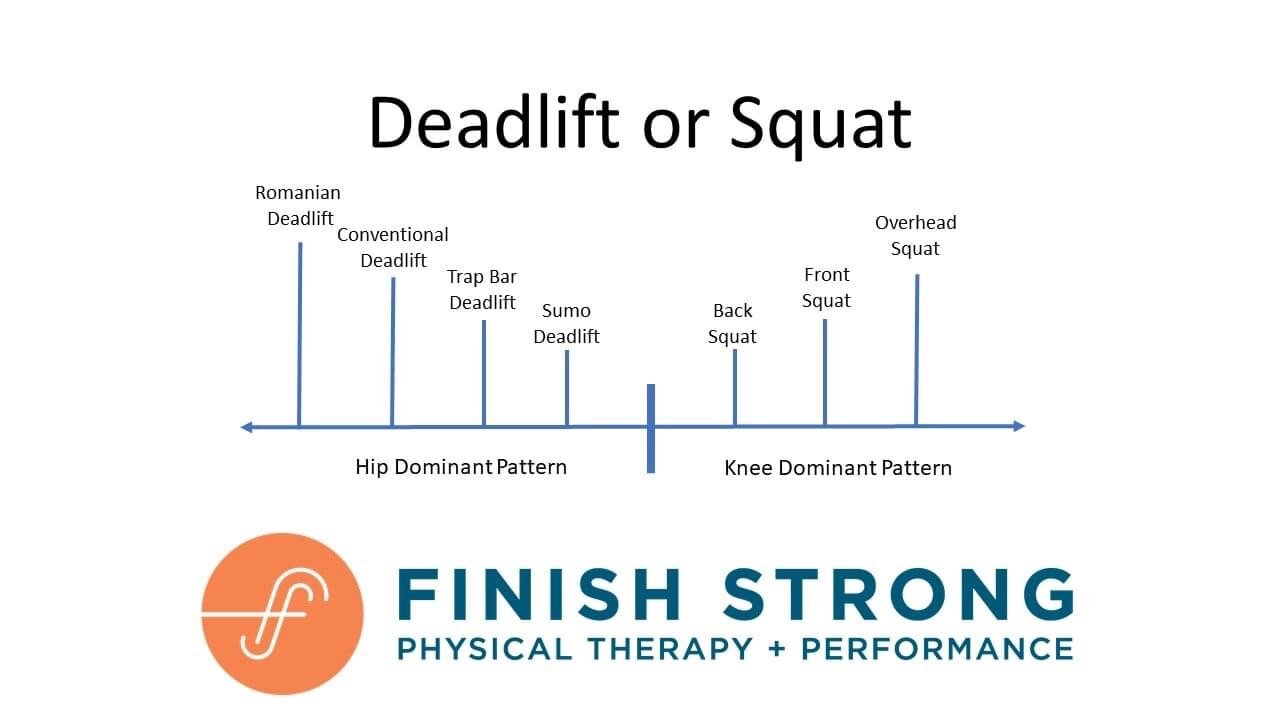Squatting: A Basic Guide for Using the Front Squat and Back Squat
Front squats and back squats are common squat variations that are not only in many strength and conditioning programs but also gaining popularity in physical therapy and rehabilitation programs. Squats in general are more knee dominant movements but variations exist between different styles of squatting. Earlier this year we presented unique differences between deadlift and squat patterns.
We know that the front squat is more hip dominant in comparison to the front squat but what truly is the same about these patterns and what is really different? Here is what we know is the same for these movements:
There is no real difference in abdominal activation, glute or hamstring activation.
The gluteus maximus activation increases with the depth of the squat but is no different between the front and back squat.
But what’s the actual difference between the back squat and the front squat?
The decent of the squat begins with the hip hinge and then a lowering into the squat, maintaining the bar over the midfoot.
There are less compressive forces at the knee joint with the front squat. When considering these compressive.
Those who have limited shoulder external rotation will have an easier time getting into the position. Those that deal with AC joint issues will tend to fair better with the back squat since the bar across the front shoulder may cause pain.
Increasing erector spinae muscle activation occurs with front squat
There is more quadriceps activation with the front squat.
Higher loads can be lifted with the back squat versus the front squat.
Here are the steps to improve technique with the front squat.
Set the rack position at the appropriate height. To set that height, you should be able to have slight bend in the knee while the bar is resting on the rack and on your shoulder.
The barbell rests on the anterior deltoid. Regardless of grip, the elbows should be pointing forward and the triceps shoulder be parallel to the ground.
Feet should be slightly toed outward and think of maintaining a tripod stance (equal contact between your big toe, your pink toe and heel)
Take a breath in and brace the core before lowering.
To lower into the squat, complete a small hip hinge and then lower into the squat maintaining a fairly vertical torso.
Go as deep as your mobility allows safely and comfortably.
Pry open the hips into external rotation and allow the knees to translate forward.
The bar should remain over the midfoot throughout the squat.
Ascend by standing straight up and exhale throughout the motion.
Maintaining an upright torso, forearms parallel with the floor, and tibia translation forward.
Here are the steps to improve technique with the back squat.
Bring your body under the bar and rest the barbell on your traps and shoulders. Make sure the hands are even on either side of the bar.
Feet width is highly dependent on muscle activation and what is comfortable for the squatter.
Take a breath in and brace the abdominals.
Sit back into the hips, bend the knees and lower into the squat.
Go as deep as your mobility allows safely and comfortably.
Pry open the hips into external rotation and allow the knees to translate forward.
The bar should remain over the midfoot throughout the squat.
Ascend by standing straight up and exhale throughout the motion.
For more tips and tricks with squatting, reach out to Matt at Finish Strong PT to help guide you through the process.
References
Caterisano A, Moss RF, Pellinger TK, et al. The effect of back squat depth on the EMG activity of 4 superficial hip and thigh muscles. J Strength Cond Res. 2002;16(3):428–432.
Gullett JC, Tillman MD, Gutierrez GM, Chow JW. A biomechanical comparison of back and front squats in healthy trained individuals. J Strength Cond Res. 2009;23(1):284–292. PubMed doi:10.1519/ JSC.0b013e31818546bb
Comfort, Paul; Pearson, Stephen J; Mather, David An Electromyographical Comparison of Trunk Muscle Activity During Isometric Trunk and Dynamic Strengthening Exercises, Journal of Strength and Conditioning Research: January 2011 - Volume 25 - Issue 1 - p 149-154



